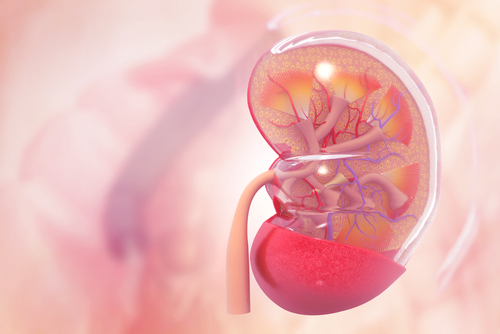Organs May Actively Fight Autoimmune Diseases, SLE Study Suggests
Written by |

Organs affected by autoimmune disease might be able to suppress T-cell function in a manner that is similar to tumors, actively preventing them from causing damage, a study in systemic lupus erythematosus (SLE) shows.
The findings, however, suggest that cancer immunotherapies that work to reactivate the immune system could have deleterious effects in those with autoimmune conditions.
The study, “Kidney-infiltrating T cells in murine lupus nephritis are metabolically and functionally exhausted,” was published in the Journal of Clinical Investigation.
While lupus nephritis is the most common organ-specific complication associated with SLE, the mechanisms underlying the condition are still poorly understood.
Studies suggest that the disease is caused by activated T-cells, which is supported by the benefits of tacrolimus — an immunosuppressive medication that targets T-cells — in lupus nephritis patients.
The common belief is that kidney-infiltrating T-cells are activated effector cells that cause damage to the kidney. However, most studies examining T-cell activation in lupus have been done in blood cells rather than organ-specific T-cells.
To fill this gap, researchers investigated kidney immune cells from three lupus mouse models and compared them with immune cells from the spleen — which usually is not affected by lupus — of the same mice.
Compared to spleen cells, kidney T-cells produced fewer inflammatory proteins, proliferated less, and produced high levels of inhibitory receptors such as PD-1. These cells also used much less energy than spleen T-cells.
Overall, instead of behaving as activated immune cells as expected, kidney T-cells showed signs of exhaustion, researchers said.
“The T-cells were there, but they weren’t aggressively active, in fact, it was the exact opposite,” Jeremy Tilstra, MD, PhD, an assistant professor of medicine at the University of Pittsburgh School of Medicine, said in a press release. “They were sluggish, ineffective killers and didn’t divide very well, which was completely unexpected.”
The exhaustion was seen even in young mice that had not yet developed common lupus nephritis symptoms, indicating that T-cell suppression in the kidneys could start early in disease progression.
Because kidney T-cells resembled tumor T-cells, which are often exhausted as a consequence of immune checkpoint proteins produced by cancer cells, researchers hypothesized that the kidney cells were also producing proteins that inhibited T-cells from becoming active and causing damage.
They found that, indeed, kidney cells from lupus mice produced more of the PD-L1 factor — which inhibits T-cells — than a normal kidney, suggesting a possible mechanism for T-cell exhaustion in the kidneys.
“Target tissues may not be as susceptible to autoimmune infiltrates as previously thought and may be endowed with multiple mechanisms to naturally suppress locally destructive adaptive immunity,” researchers said.
But if T-cells are exhausted, how can they still cause damage? The authors “suggest that, though most infiltrating cells are exhausted, they nevertheless retain some effector function and, in fact, cause slow rather than the acute destruction and decline that characterizes chronic autoimmunity in these [lupus nephritis] models.” Another possibility is that newly arrived cells cause the damage before becoming exhausted.
The mechanisms that lead to immune exhaustion and their relevance for lupus nephritis should be further studied, but so far the findings suggest that inducing inhibitory receptors in kidney T-cells could be a potential approach for further inhibiting them and preventing kidney damage.




